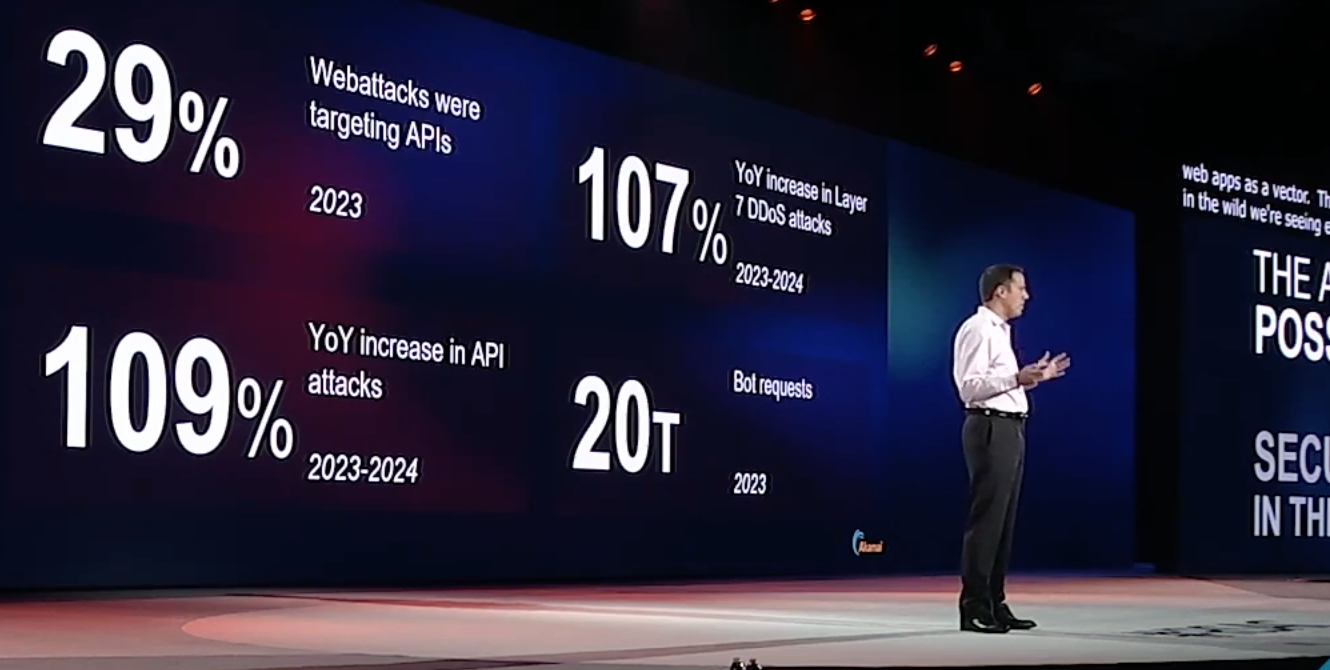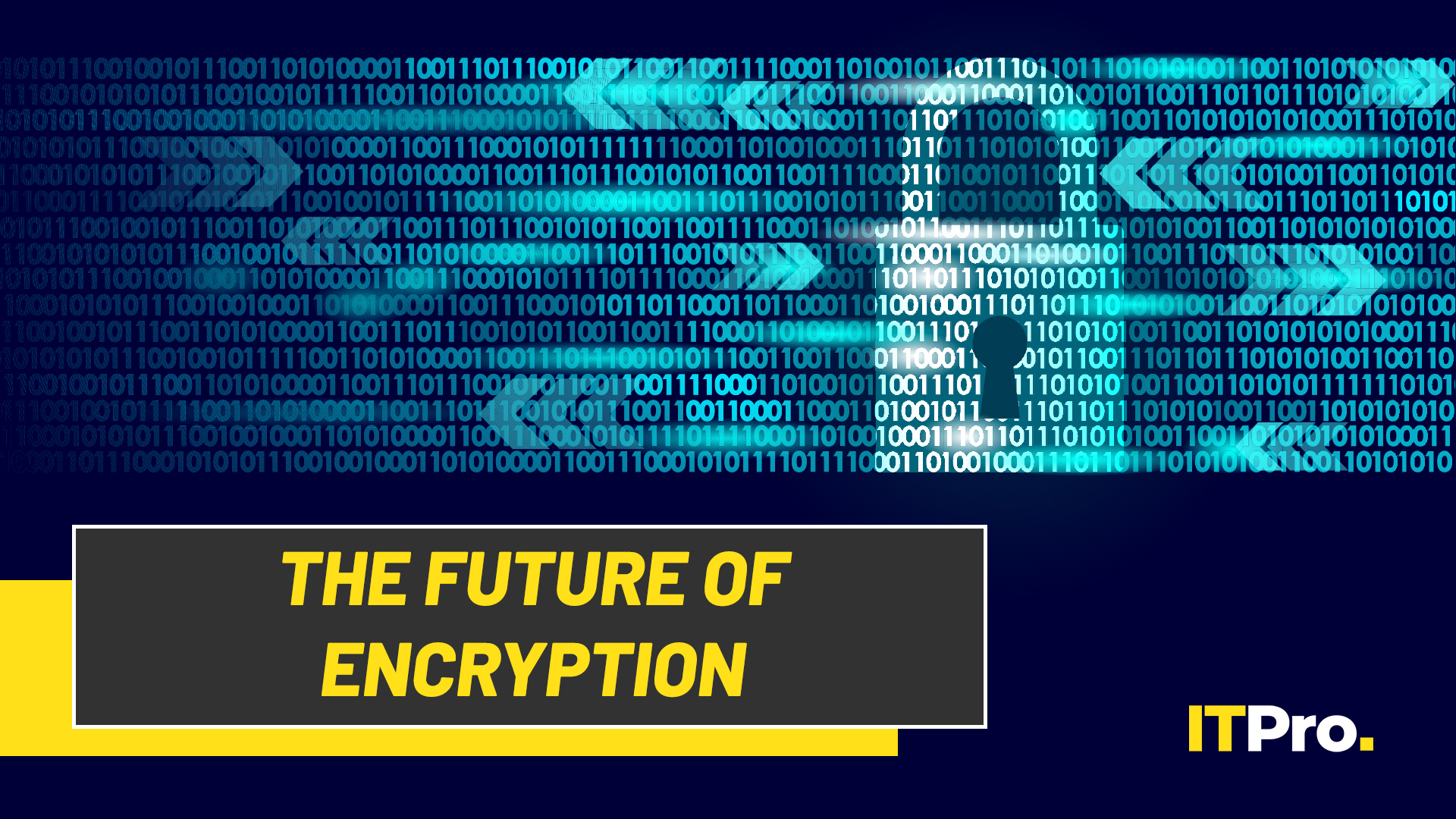APIcalypse Now: Akamai CSO warns of surging attacks and backdoored open source components
Akamai has warned that apps and APIs are bearing the brunt as threat actors pivot to living off the land


In a hard-hitting keynote at this year’s RSA Conference, Boaz Gelbord, senior vice president and CSO at Akamai, sounded the alarm over the rising tide of attacks targeting applications and their underlying infrastructure.
Threat actors are increasingly leveraging legitimate tools and components within organizations to carry out their nefarious activities, a tactic known as "living off the land," Gelbord warned.
Citing Akamai's latest threat intelligence data, Gelbord revealed a staggering 48% year-on-year increase in web attacks, with 29% targeting APIs. Even more alarming was the 109% surge in API attacks, a trend Gelbord attributed to the challenges of inventorying and securing these critical interfaces.
"It's hard to inventory APIs. You kind of know what your public-facing websites are, and probably have processes internally for setting those up. You know, they're customer-facing or they're user-facing,” he said.
“It's harder for an organization to even know what all of its APIs are that are out there. And it's harder to secure them."
Gelbord also highlighted the risk posed by compromised open source components, citing the recent XZ utils vulnerability as a turning point. In this case, a widely used open source utility had been hijacked by a malicious entity, enabling remote code execution.
"This is probably the most stunning example of how those types of utilities can pose risks," Gelbord warned.
Get the ITPro daily newsletter
Sign up today and you will receive a free copy of our Future Focus 2025 report - the leading guidance on AI, cybersecurity and other IT challenges as per 700+ senior executives
"Luckily, there was an eagle-eyed engineer over, I think, at Microsoft who spotted this and saw some performance differences and how this utility was performing and managed to kind of alert folks before this got out into general distribution, but we don't know how many more of those are out there lurking in the wild."
Gelbord emphasized the importance of organizations adopting a risk-based approach to secure their applications, advocating for a strong understanding of how their threat models align with the various components of their applications, from code to infrastructure.
He also underscored the criticality of multivendor interoperability and the integration of compliance efforts with technical security programs.
RELATED WHITEPAPER

Concluding his keynote, Gelbord stressed the transformative potential of AI in reshaping security models, particularly in areas like identity, user authorization, security operations, and monitoring.
"AI is going to fundamentally change a lot of pieces of our overall security model,” he said.
“The most obvious spaces, which we mentioned earlier, are identity and user authorization. This is moving very fast, but also in different places like how we do our security operations and how we do our security monitoring.”
Rene Millman is a freelance writer and broadcaster who covers cybersecurity, AI, IoT, and the cloud. He also works as a contributing analyst at GigaOm and has previously worked as an analyst for Gartner covering the infrastructure market. He has made numerous television appearances to give his views and expertise on technology trends and companies that affect and shape our lives. You can follow Rene Millman on Twitter.
-
 Enterprises face delicate balancing act with data center sustainability goals
Enterprises face delicate balancing act with data center sustainability goalsNews High energy consumption, raw material requirements, and physical space constraints are holding back data center sustainability efforts, according to new research from Seagate.
By Emma Woollacott
-
 Cleo attack victim list grows as Hertz confirms customer data stolen
Cleo attack victim list grows as Hertz confirms customer data stolenNews Hertz has confirmed it suffered a data breach as a result of the Cleo zero-day vulnerability in late 2024, with the car rental giant warning that customer data was stolen.
By Ross Kelly
-
 'You need your own bots' to wage war against rogue AI, warns Varonis VP
'You need your own bots' to wage war against rogue AI, warns Varonis VPNews Infosec pros are urged to get serious about data access control and automation to thwart AI breaches
By Rene Millman
-
 CrowdStrike CEO: Embrace AI or be crushed by cyber crooks
CrowdStrike CEO: Embrace AI or be crushed by cyber crooksNews Exec urges infosec bods to adopt next-gen SIEM driven by AI – or risk being outpaced by criminals
By Rene Millman
-
 Microsoft security boss warns AI insecurity 'unprecedented' as tech goes mainstream
Microsoft security boss warns AI insecurity 'unprecedented' as tech goes mainstreamNews RSA keynote paints a terrifying picture of billion-plus GenAI users facing innovative criminal tactics
By Rene Millman
-
 AI is changing the game when it comes to cyber security
AI is changing the game when it comes to cyber securityNews With AI becoming more of an everyday reality, innovative strategies are needed to counter increasingly sophisticated threats
By Rene Millman
-
 RSAC Chairman urges collaboration to ensure collective defense in security
RSAC Chairman urges collaboration to ensure collective defense in securityNews Chairman emphasizes the critical need for cooperation among cyber security experts
By Rene Millman
-
 IT Pro Live: The future of encryption
IT Pro Live: The future of encryptionVideo AI and quantum ccomputing could be about to change the face of security forever
By IT Pro
-
 Mobile apps now most common method of fraud
Mobile apps now most common method of fraudNews RSA Security report highlights the rise in burner devices and rogue apps
By Bobby Hellard
-
 Ransomware in reality: people pay
Ransomware in reality: people payNews In real life, noble intentions give way to business truths
By Jane McCallion